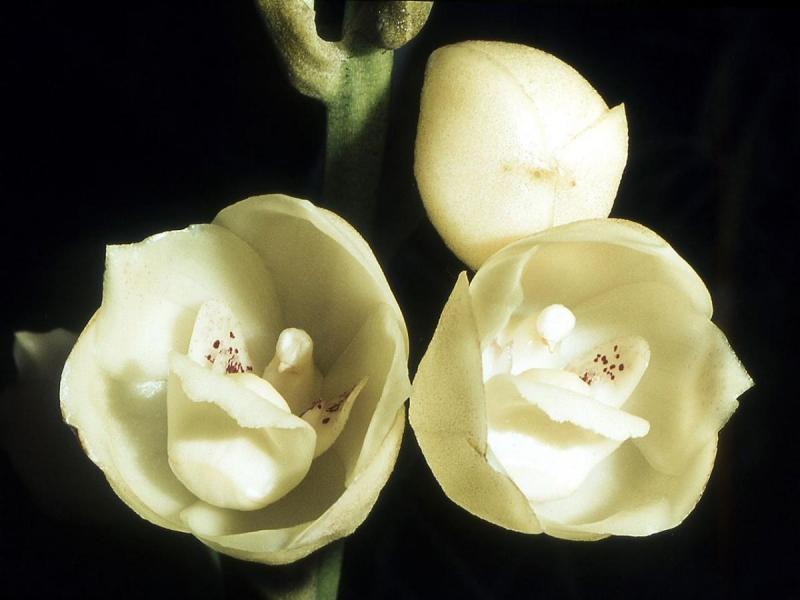Peristeria elata
Also known as: Dove Orchid or Holy Ghost Orchid or The Stately Peristeria in the subfamily: Epidendroideae
Native to: Costa Rica Departamento del Huila - Colombia Ecuador Provincia de Colon - Panama
General Information
Dove Orchid or Holy Ghost Orchid is a large sympodial warm to hot growing epiphytic, lithophytic or terrestrial orchid belonging to the sub family Epidendroideae native to Costa Rica, Colombia, Ecuador, and Panama.
Plant Description
Sympodial. Grows to 135cm. Each new growth has numerous erect arching, lance shaped, oblong shaped leaves that grow to 6-100cm long. Pseudobulbs grow to 10-15cm
Flowers
Numerous fragrant blossoms appear during Spring
Fragrance
The orchid is fragrant.
Blooming Season
- Spring
Substrate(s)
- Coarse
- Medium
- Bark
- Charcoal
- Treefern
- Perlite
Care Notes
This orchid goes into a dormancy phase during winter, during this phase it is best not to provide water unless the plant is starting to look thirsty. The lack of water increases the chance of flowering in spring, and also reduces the likelihood of any rot forming. Do not resume watering until new growth has appeared and is growing strongly.
Often a period of intense growth occurs after dormancy. During this time the amount of light, water and fertiliser the plant receives will directly impact the amount of growth that occurs during this time, and in the case of seedlings, will reduce the time required to reach maturity.
It's recommended to heavily reduce the water amount at the middle to end of autumn to trigger dormancy. Leaves on older bulbs will begin to drop during this time while the newer bulbs continue to mature until terminal leaves appear at the tip of the pseudobulbs.
Repotting can be done any time of the year though it's best to do it in early spring when new growth is appearing as this also means new roots will appear to help the plant anchor into the new media and offset any damage to established roots during the repotting process.
Fragrant:
- IsFragrant
Climate
Grows at low to high elevations. Rainfall ranges from 23mm to 249mm per day, heaviest in November and lightest in January. Humidity ranges from 71% to 86%, highest in September and lowest in March. Temperature ranges from 22C to 31C, highest in March (23C to 31C) and lowest in January (22C to 28C).
Fertiliser
dormant-medium-demand-orchid Use balanced fertiliser year round. Be sure to flush out excess fertiliser by running water through the media regularly year round. Apply fertiliser regularly at half strength year round. Use a high Nitrogen fertiliser during Spring and Summer. Use a high Phosphorous fertiliser during Summer.
Potting
These plants can be sensitive to repotting though should not require repotting regularly. Repotting should be done when the mix has broken down to the point that it doesn't absorb water or holds onto water for far too long, usually the plant shows a decline in growth as well. Repotting is best done after the growing season when the plant has died back.
The mix should be free draining, with a blend of 30% inorganic ingredients such as coarse sand, gravel or perlite, mixed in with about 70% organic ingredients such as peat, leaf litter or decomposed bark. Avoid commercial potting mixes as they can vary wildly and may contain "wetting agents" that can hold onto water for loo long, causing rotting and stunted growth.
Repotting is best done annually.










